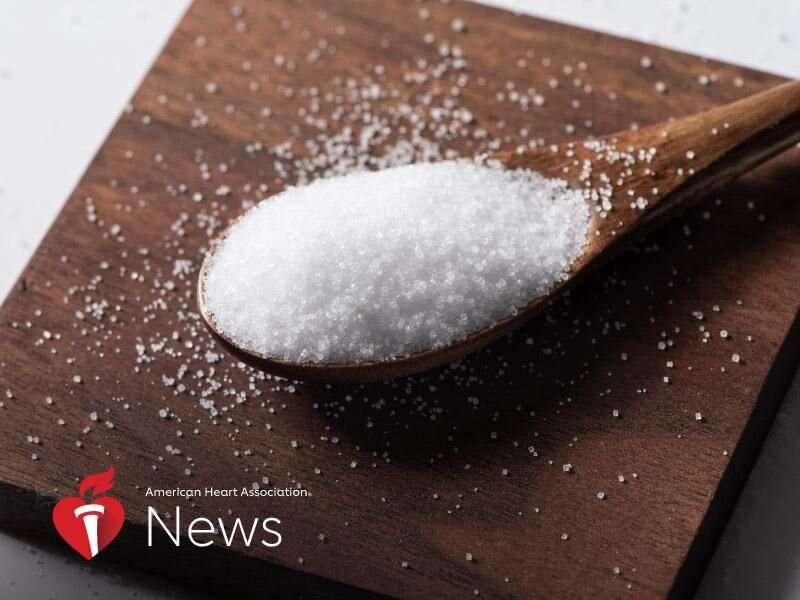How much harm can a little excess salt do? Plenty


Many people know too much salt in their diet is a bad thing. Not nearly as many know exactly why.
“They’re surprised at the degree to which it can affect them,” said Dr. Cheryl Laffer, a professor of medicine at Vanderbilt University in Nashville, Tennessee. “And at the amount of salt that there is in the American diet.”
According to the Centers for Disease Control and Prevention, about 90% of Americans age 2 and older eat too much sodium. Most of it is in the form of salt, also known as sodium chloride.
Here are six things salt does to the body—and what you can do to protect yourself.
Let’s start with the heart.
With the circulatory system, salt’s effects are “a very simple plumbing problem,” said Dr. Fernando Elijovich, a professor of medicine at Vanderbilt University.
The heart is the pump and blood vessels are the pipes, he said. Blood pressure goes up if you increase how much blood has to move through the pipes. Blood pressure also rises if you shrink those pipes.
Salt does both. When there’s excess salt in your system, the heart pumps more blood in a given time, boosting blood pressure. And over time, salt narrows the vessels themselves, which is the most common “plumbing” feature of high blood pressure.
The harm can come quickly. And over time.
Within 30 minutes of eating excess salt, your blood vessels’ ability to dilate is impaired, Elijovich said. The damage from persistent high blood pressure shows up down the road, in the form of heart attacks, strokes and other problems.
The good news, Laffer said, is the benefits of cutting back on excess salt also show up quickly. If you significantly reduce how much salt you eat, your blood pressure goes down within hours or days.
And keeping it low can make a significant long-term difference. “In the U.K., they actually had a nationwide effort to reduce salt in commercial foods,” she said. “Within a couple of years, they had reduced the numbers of heart attacks and other bad outcomes. And that was pretty striking.”
It’s a whole-body issue.
Beyond the heart, excess salt can strain the kidneys. Part of their function is to excrete salt, Laffer said. “But the kidneys, in hypertension, may not excrete salt appropriately. They may hold onto it.” That can lead to problems ranging from swollen ankles to fluid buildup around the heart and lungs.
Salt also can threaten the brain by damaging blood vessels and raising blood pressure, which is a major risk factor for stroke. It also might change the behavior of the brain stem, which helps regulate salt balance and blood pressure.
Scientists are just grasping some of the ways salt works.
Recent studies show salt affects the immune system, leading to inflammation that could be behind heart disease and other problems, Elijovich said.
His Vanderbilt colleagues also are examining how salt might affect bacteria in the gut. The investigation is new, Laffer said, but evidence points to gut bacteria having a role in salt-induced inflammation and high blood pressure.
It affects everyone differently.
Blanket statements about salt and health can be tricky. The root mechanisms of how salt affects the body aren’t fully understood.
Some people who don’t have high blood pressure can eat salt without seeing their blood pressure increase. Others may have “salt sensitivity,” where even moderate salt intake triggers a higher blood pressure.
But the simple fact is that for most people, cutting salt is a healthy thing, Elijovich said. “If you could reduce the amount of salt that people eat, you will benefit the general population.”
Think beyond the shaker.
Salt and sodium are not exactly the same, but most of the sodium in processed and restaurant foods is salt, and the terms are used interchangeably.
A fast-food hamburger might have more than 1,000 milligrams of sodium; a large order of fries could add 400 mg. A can of chicken noodle soup might have more than 2,200 mg.
Federal dietary guidelines recommend adults eat no more than 2,300 mg of sodium a day. The American Heart Association says the ideal daily limit is 1,500 mg. Yet Americans eat an average 3,400 mg of sodium a day.
So read labels, Laffer said. And be aware that just because a product is labeled “low sodium” doesn’t mean it is.
Elijovich tells his patients to try cooking with flavorful spices, which can make them miss the taste of salt less. But he emphasized that home cooking and a sprinkling of salt at dinner are not the main culprits.
“The majority of our salt intake is not in what we do,” he said. “It’s in what we buy.”
Whatever you do, it could make a difference. Earlier this year, an analysis of 85 studies published in the journal Circulation showed any reduction in sodium decreases blood pressure.
Source: Read Full Article